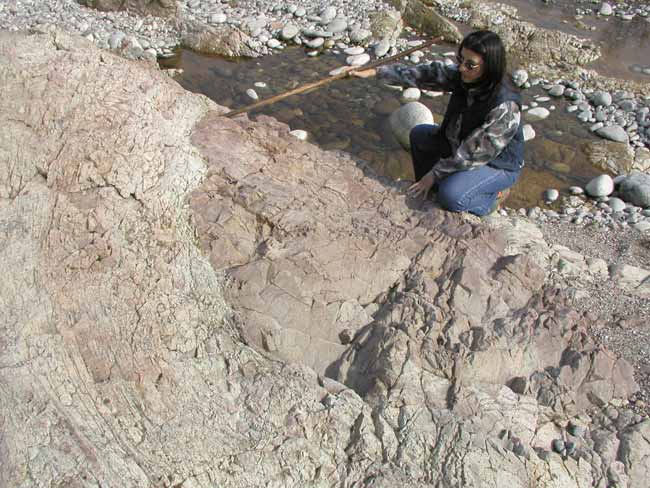Plumbing of a Supervolcano Revealed

The fossilized remains of a supervolcano that erupted some 280 million years ago in the Italian Alps are giving geologists a first-time glimpse at the deep "plumbing system" that brings molten rock from far underground to the Earth's surface.
James E. Quick of Southern Methodist University in Texas and his team discovered the "fossil," or extinct, supervolcano in the Alps' Sesia Valley two years ago, but they are just now reporting the results after careful study.
The researchers estimate the ancient eruption sent about 500 cubic kilometers of volcanic ash into the atmosphere. For comparison, the supervolcano under Yellowstone National Park, which erupted 630,000 years ago, produced about 1,000 cubic kilometers.
Their study, an "autopsy" of sorts, according to Quick, could help scientists to better understand what causes these massive explosions.
Deep inside a volcano
Supervolcanic eruptions are much bigger than any volcanic eruptions in recorded history, sending hundreds and sometimes thousands of cubic kilometers of ash into the air that can affect the Earth's climate. These eruptions don't happen very often — perhaps once every few hundred thousand years. They leave behind huge craters, called calderas, which can be tens of kilometers in diameter.
The one at Yellowstone, which scientists say will eventually erupt again, is expected to cover all of the United States in ash.
Get the world’s most fascinating discoveries delivered straight to your inbox.
Active supervolcanoes, like the one in Yellowstone, have underground chambers of molten rock, or magma. This magma can build up and rise to the surface, causing the caldera to bulge. Sometimes, the surface can rise and fall by more than a meter, Quick said.
The caldera of the Sesia Valley supervolcano is about eight miles (13 km) wide.
A special feature of this supervolcano — its location — allowed Quick's team to see this underground magma system. The supervolcano is located in a spot where the Earth's crust is essentially turned up on its edge thanks to a collision between Africa and Europe that started 30 million years ago. Because of this uplift, "You can see the crust underneath it to a very great depth, essentially right through the crust of the continent down to a depth of about 25 km (15.5 miles)," Quick said.
Before this discovery, scientists had only seen the inner workings of a supervolcano down to a depth of about three miles (five km). At the Sesia Valley supervolcano, scientists can see how the magma traveled from its source up to the Earth's crust.
"We can see the place in the Earth where the magmas are generated," Quick said. "We can see at higher levels in crust where these magmas have crystallized into what we call granites. And at the very highest levels, we have the rocks [that] erupted during the eruption of the supervolcano," he said. The researchers are studying how the magma traveled to the surface and how its composition changes as it moves through the Earth's crust.
Super eruptions
The scientists hope that their discovery can teach them more about active supervolcanoes. "What we hope to do is to better understand what processes contribute to making this super eruption," Quick said. "If we can understand that then we would better be able to understand the signals that we see when we're monitoring supervolcanoes that are still alive." Quick likens the research to an autopsy in which doctors are trying to figure how a disease progresses in order to better treat patients who are still alive.
"You can think of this as an autopsy of a supervolcano that is now dead, but we're able to look at it all the way through," he said.
The research was published in the July issue of the journal Geology. These are the first published findings regarding the Sesia Valley supervolcano. The study was led by Quick and the research team included members from Stanford University in CA, and the Universita di Trieste in Italy.
- Image Gallery: Wild Volcanos
- Super Volcano Will Change Civilization, Geologists Warn
- 101 Amazing Earth Facts

Rachael is a Live Science contributor, and was a former channel editor and senior writer for Live Science between 2010 and 2022. She has a master's degree in journalism from New York University's Science, Health and Environmental Reporting Program. She also holds a B.S. in molecular biology and an M.S. in biology from the University of California, San Diego. Her work has appeared in Scienceline, The Washington Post and Scientific American.


